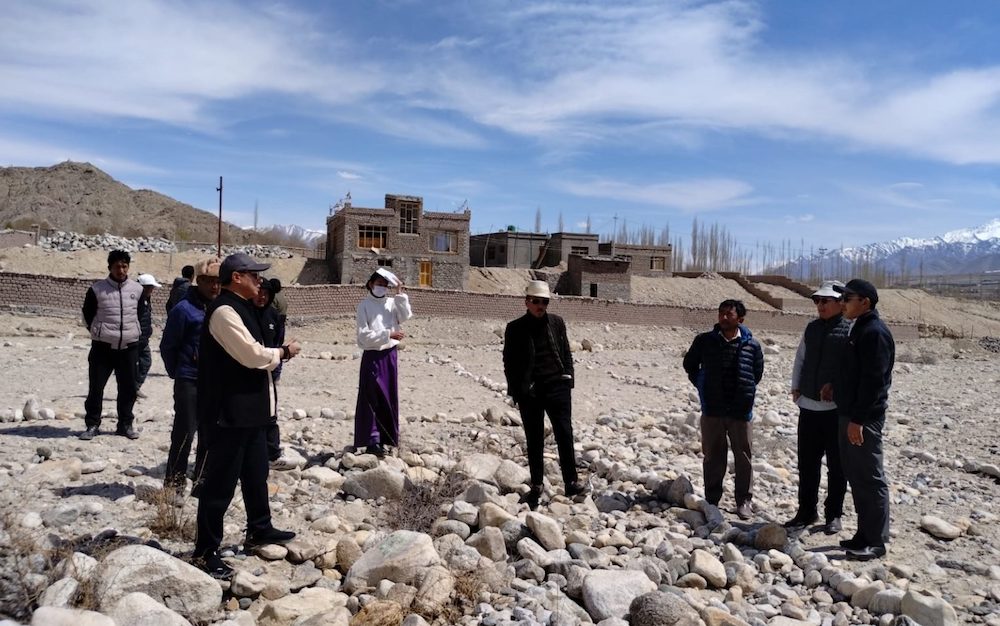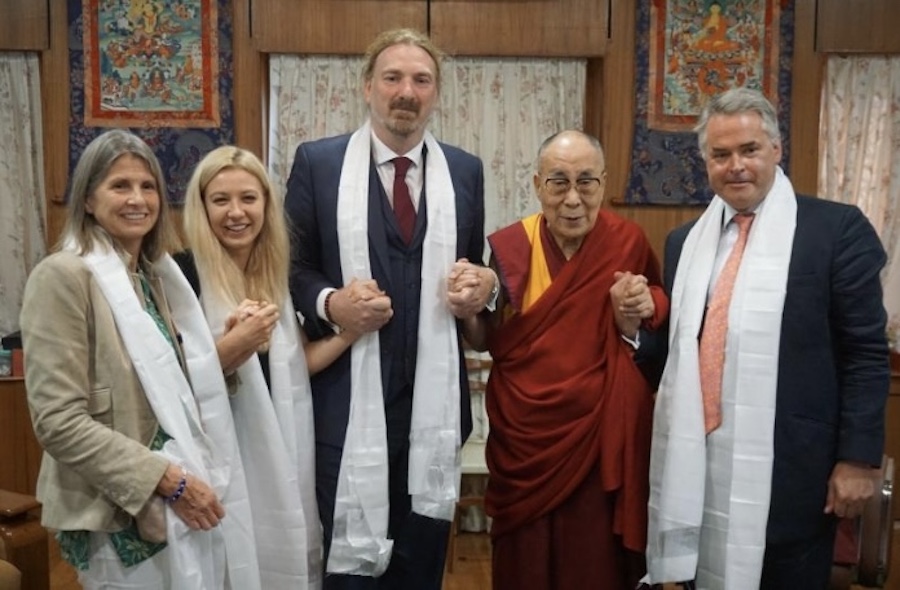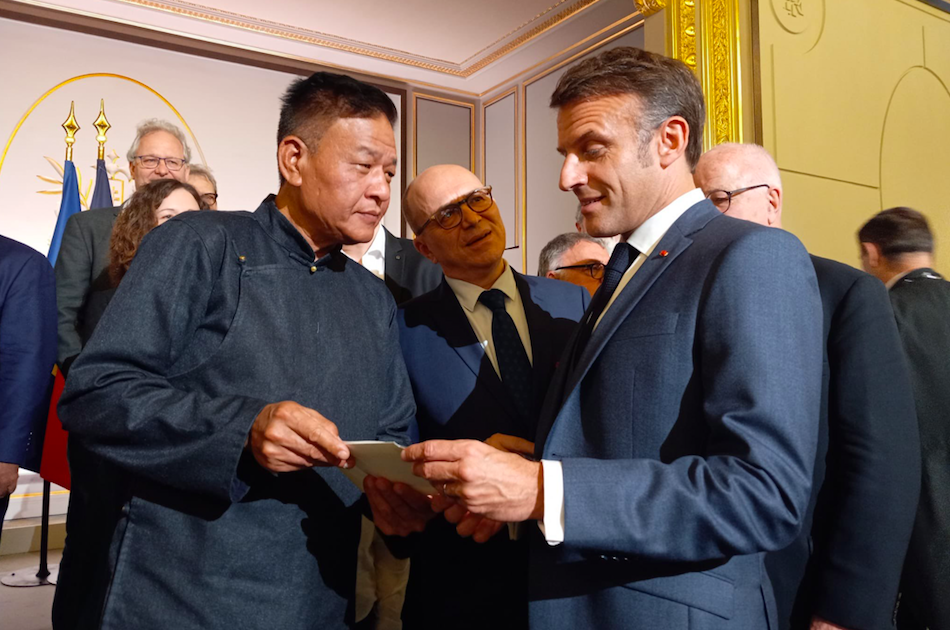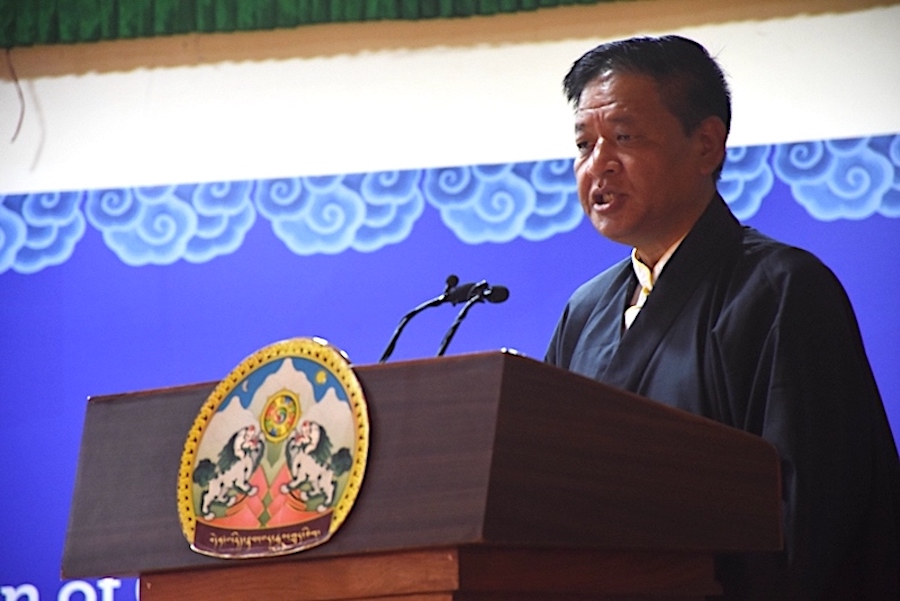By Tsering Namgyal Khortsa
During a talk at the Constitution Club in New Delhi this February, His Holiness the Dalai Lama stressed the importance of a systemic study of the Buddhist philosophy. His Holiness believes that merely having a faith in the religion may not be adequate and emphasized the need for an actual study of the religious texts. In the Tibetan Worldmagazine last month, American scholar of Tibetan Buddhism Robert Thurman raises exactly the same concerns and vociferously calls for a more widespread philosophical education amongst the new-generation. We all know that most young Tibetans, myself included, are not very knowledgeable about Buddhist philosophy. There are many reasons behind this. The most important of which is that they are educated in the standard school systems in India where there is very little training in religious studies to begin with.
In the highly competitive modern education system, students are often too busy studying for exams and preparing for their careers to ever devote time to the study of Buddhist philosophy. For some, it may even seem like a luxury to be waxing philosophical about Nagarjuna’s ’emptiness’ while making ends meet in exile. Even if some more philosophically-inclined are interested in Buddhism, most of the texts may not be readily accessible for all, except perhaps for those students who already possess a very good command over Tibetan language and literature. Buddhist courses in Tibetan schools, at least when I was in high school in the late 1980s, are only taught in Tibetan.
While we accepted the greatness and the virtues of this philosophy, some of us, at the same time, may sometimes even have debated on the merits and demerits of our religion-centric culture. But if Buddhism, or the Tibetan Buddhism to be precise, is to be ever promoted and used as a philosophy, rather than merely as a religion, then perhaps it is time to rethink this attitude. The thinking may even have become slightly outdated. Buddha is not a God and there is a lot more to Buddhism then prayer flags. Most importantly, Buddhism lies at the core of the Tibetan identity and seems to have become the passport of Tibet to the world, its most important claim to fame. It has even helped carve out a remarkable space for the stateless Tibetans in the world’s imagination. Our religious identity triumphs over all the other identities by a wide margin.
During my nearly 17 years abroad, whenever I say that I am a Tibetan, it is almost given that I will get a question about Buddhism. Similarly, it is quite likely that a Tibetan doctor overseas would find his/her religious identity naturally giving priority over all the other identities, say, that he/she is a medical doctor (professional identity) and that he/she is a Tibetan (ethnic identity). The fact that being a Buddhist has become more important than being a Tibetan shows how crucial it has become to our constitution of identity as a human being. This is perhaps the reason why we should learn to appreciate Buddhism as a philosophy, as a way of being and living, rather than as a religion. And this is the reason why it is equally important to understand that Buddhism, or the teachings originating from Lord Buddha, as a philosophy is not just a monopoly of the ecclesiastical system. Everyone, including the young Tibetans, has the right to learn about it, lecture on it, promote it and most important of all to integrate it in our daily lives, especially the meditational practices. Students interested in Buddhist philosophy may finally have an opportunity to study them, thanks to a Denmark-based organization, Tarab Institute. Tarab Rinpoche was one of the most brilliant Buddhist philosophers of his generation. He was educated at Drepung Monastery where he obtained his Geshe Lharampa degree (academic qualification of Doctorate in Buddhist philosophy conferred in the three monastic universities of Tibet). But he spent more than 30 years in Denmark where he passed away in 2004. During his conspicuously low-profile stay in Denmark as a research scholar at the Royal Danish Library and, after his retirement, as a Buddhist teacher, he never stopped thinking, like many other Tibetan scholars, about how to use Buddhist philosophy to not only make sense of the reality but also to actually apply the ancient knowledge in practical applications, notably psychotherapy. I believe that the fact that he went about, for most of his life, like a normal person with a day job (riding the buses, taking the subway and being subject to occasional racial discrimination) may have made him even more willing to study the philosophy in view of practical applications.
Together with his long-time collaborator and psychologist Lene Handberg, he spent many years developing personal development courses rooted in the original Buddhist philosophy. The result is a series of course modules in philosophy, aptly named as Unity in Duality (UD). It is a highly accessible, a layperson-friendly course on Buddhist philosophy with introduction to all four schools of Buddhism: Vaibhasika, Sautantrika, Yogacarya and Madhyamika but with strong emphasis on how they can be used in personal development. The main goal of this multi-layered course is to help you, through an understanding of the interdependent nature of everything, to develop a view of the world based on Buddhist philosophy and then use it for your personal development. According to Handberg, His Holiness the Dalai Lama liked the course modules so much that he asked him if he could teach this to the young Tibetans. Indeed, shortly before he became ill, Rinpoche traveled to teach his Unity in Duality course to Tibetan schools around India. During his last days, he asked Handberg to pass this teaching to the young Tibetans, who may not have had the opportunity to formally study Buddhism.
In October last year, I curiously responded to an announcement in the Tibetan Review by Tarab Institute and attended a Unity in Duality course given by Lene Handberg to young Tibetans in Sarnath in December and later for a week in Dehradun in February. They were held at the Institute of Higher Tibetan Studies in Sarnath and Songtsen Library in Dehradun. I came back feeling pleasantly refreshed and extremely impressed by the easy accessibility of the teachings, the lucidity with which she explained the philosophy and the way she taught us how to meditate. It also gave me an opportunity to interact with fellow European students many of whom were medical professionals such as psychiatrists, neurologists and general practitioners.
Discussing the details here would not do justice to the depth and the breadth as well as the originality of her course. But I strongly recommend the course to all the young and eager Tibetans who wants to reconnect with Tibet’s great intellectual heritage but so far did not have the opportunity to do so. And I feel indebted to the enlightened vision of the Late Tarab Rinpoche and grateful to Lene Handberg and her team at the Tarab Institute for making this course available to us.
Tsering Namgyal Khortsa is the author of Searching for Buddha’s Tooth: Personal Stories of Tibetan Culture. He currently resides in India and can be reached at buddhatooth@gmail.com









